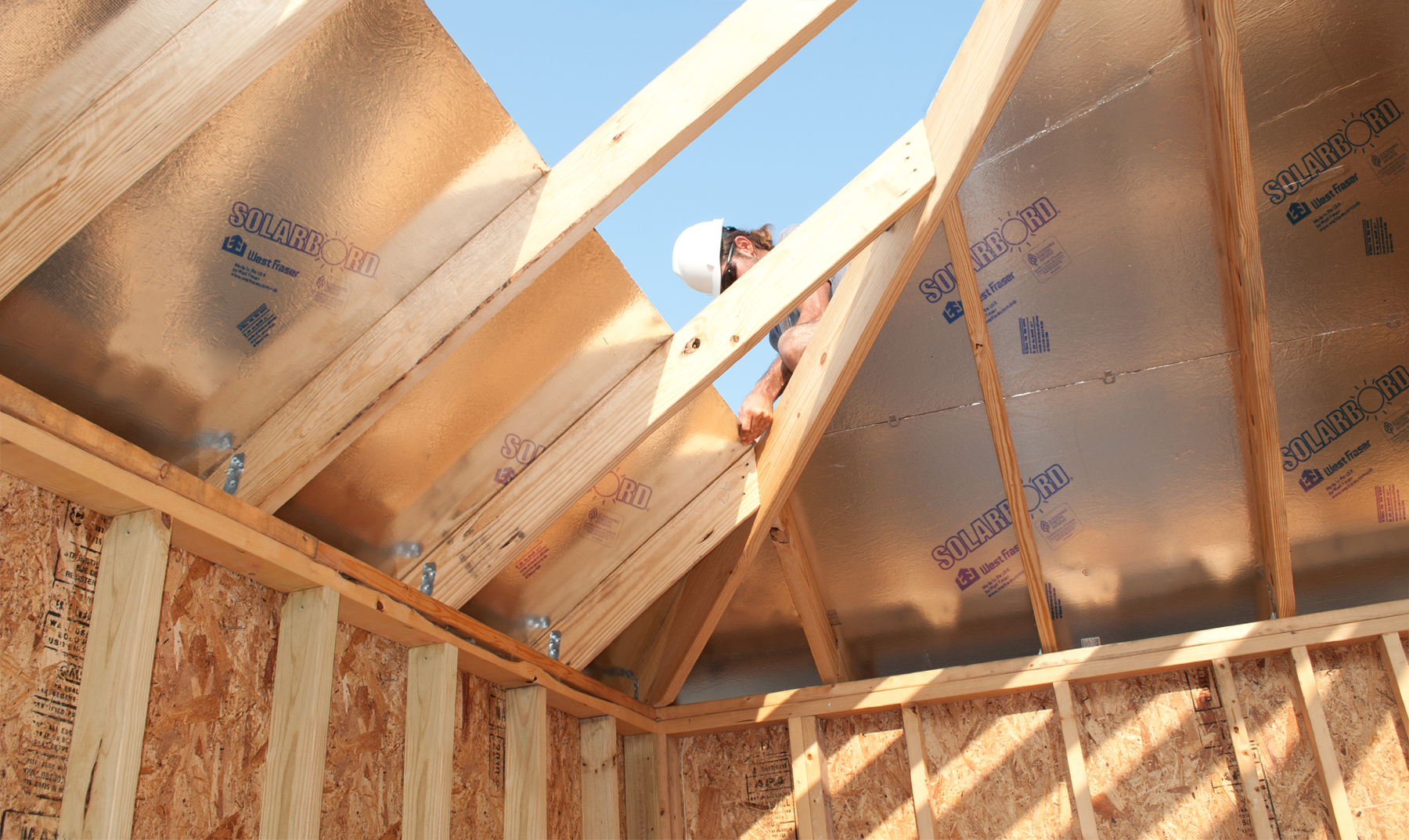
Radiant barriers are utilized to reduce summer heat gain in attics. Attics heat up when the sun’s radiant energy heats the shingles and the heat is transferred to the interior attic space through the roofing materials via conduction. The temperature of the attic space increases and that heat is transferred to the building below; increasing summer energy consumption and cooling costs. A radiant barrier can lower that heat transfer, keep the attic space cooler and lower cooling costs by up to 17% in warmer climates.
Radiant Barrier Myths
Radiant barriers have become somewhat shrouded in urban myth. They were not, for example, invented by NASA, but rather by the far less exciting German businessmen Schmidt and Dykerhoff in 1925. NASA has employed radiant barriers since the Apollo program for use on equipment, astronaut suits and spacecraft to protect against thermal radiation and for insulation in the fluctuating temperatures of space. It’s also a fact that the color and reflectance of a substance doesn’t add to its efficiency as a radiant barrier. While radiant barriers do contribute significantly to the reduction of cooling (and in some cases heating) costs, they are not the panacea to energy efficiency some make them out to be; they need to be utilized as part of a cohesive building envelope.
Radiant Barrier Sheathing
Radiation from the sun is the primary source of heat affecting your attic temperature. Radiation (infra-red) is augmented by convection and conduction. Convection is when heat is transferred through the air inside the attic and heats the insulation and conduction occurs when heat moves through the insulation to the building below. While heat is radiated and conducted in all directions it always moves from hot areas to cold areas. The hotter the attic, the more the heat moves down to the cooler building below.
The most effective radiant barrier sheathing is a structural roof sheathing panel which consists of an OSB panel with heat-reflecting foil laminated to one side. Other kinds of radiant barriers combine reflective materials (usually aluminium foil) with materials like plastic films, cardboard and kraft paper. A radiant barrier must have an emissivity of 0.1 or less to be effective.
Benefits of Radiant Barrier Sheathing
- When utilizing OSB radiant barrier sheathing, you can reflect up to 97% of solar radiation which translates into an attic heat reduction of up to 30°F.
- A cooler attic space means less heat moving to the cooler space below the attic.
- The hotter it gets the better radiant barriers work.
- The reduced attic temperature increases the efficiency of attic ductwork which prolongs the life of your heating and cooling systems because there are fewer cycle times.
- In warmer climates your may be able to reduce A/C requirements by up to ½ ton.
- Radiant barrier roof sheathing helps to improve comfort in the building interior during the warm summer months and reduces energy costs. Because heat always moves from hot areas to cold areas, radiant barrier sheathing also prevents heat transfer from the warm interior during the cooler winter months.
- Radiant barriers may help you qualify for Energy Star: “Seal and Insulate with Energy Star”.
Installation Notes
Radiant barriers require expert installation to work effectively. They should be installed with the foil side facing into the attic, adjacent to an open air space. You must ensure the attic ventilation is not blocked. If dust accumulates on the foil surface it will render the radiant barrier less efficient.
When installing radiant barrier roof sheathing, ensure that the manufacturer’s instructions are followed carefully. When installing any structural roof sheathing you are required to ensure the sheathing is spaced a minimum of 1/8” at all joints, to allow for expansion and contraction due to changes in moisture conditions. Check your local building codes, your design professional’s specification’s and the APA’s Construction Guide E30V.
Attics must be properly ventilated to meet code and to ensure that hot air can escape from the attic and to remove moisture that builds up too.
Once installed, don’t let other materials like insulation come into contact with the foil. Leave at least a ¾” space or use baffles to create a sufficient air space.
Building or retrofitting your attic with a radiant barrier will improve the value and saleability of the home. The savings on energy usage and size and duration of HVAC systems can translate into savings for the home owner and provide an excellent return on investment.
